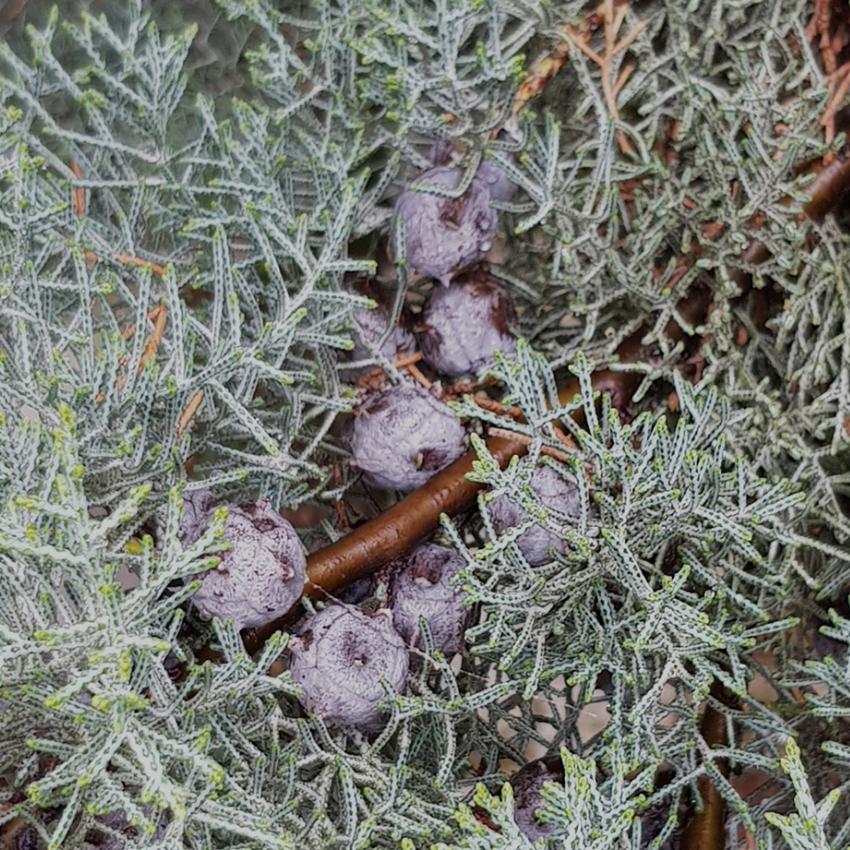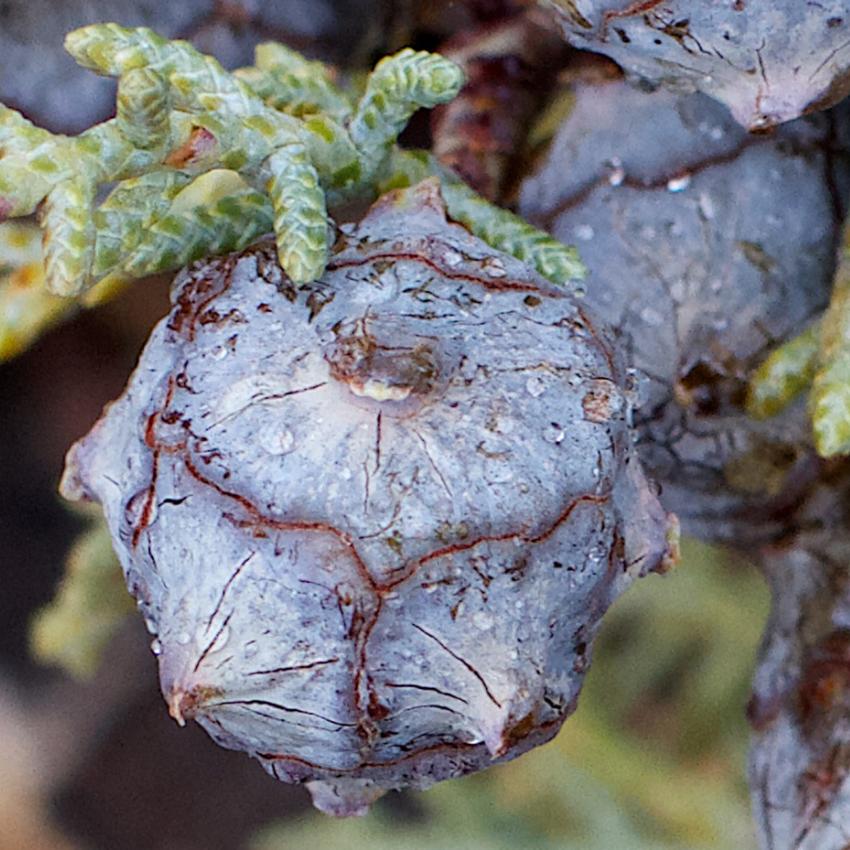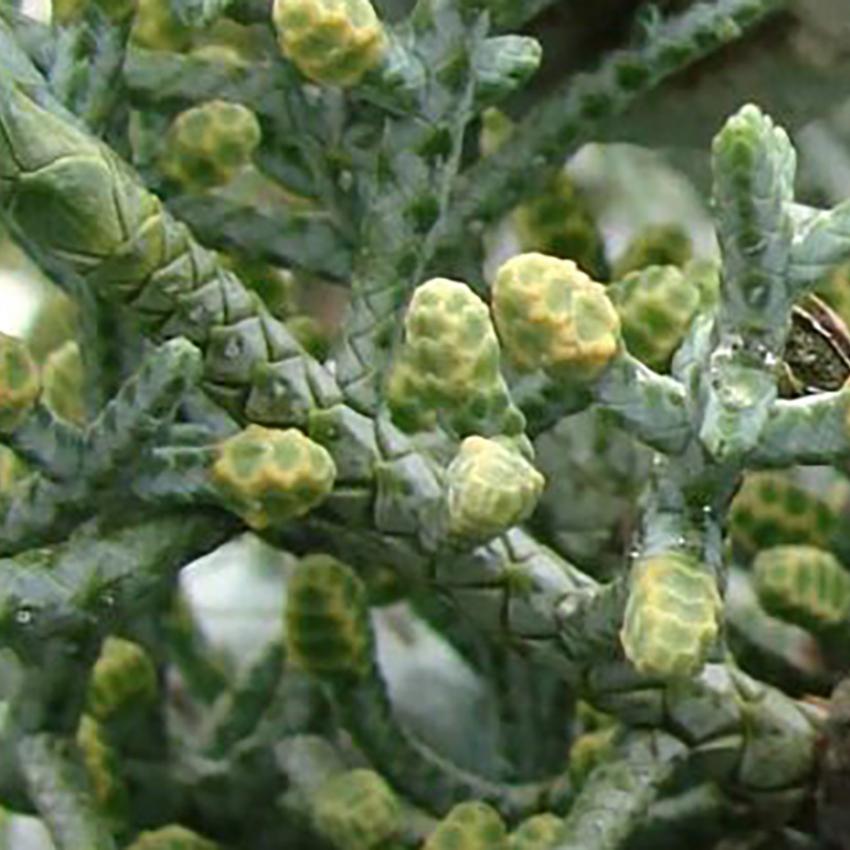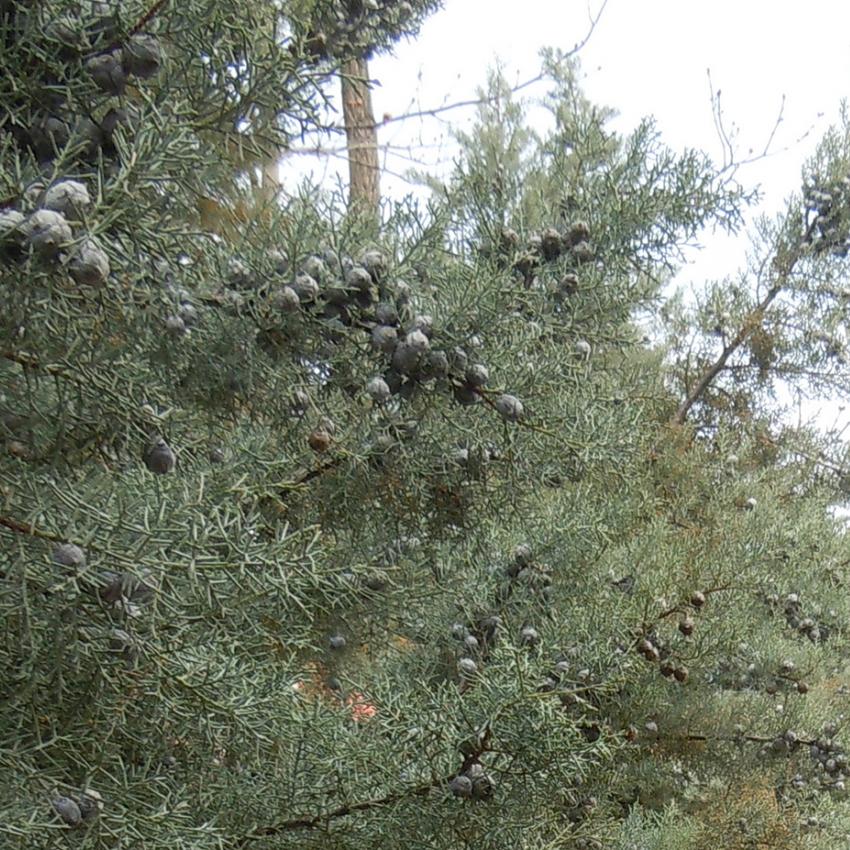



Arizona cypress
Cupressus arizonica
The Arizona cypress is a North American species of trees in the cypress family. It is native to the southwestern United States (Arizona, Utah, southwestern New Mexico, and southern California, with a few populations in southern Nevada and in the Chisos Mountains of western Texas), and in Mexico (Coahuila, Nuevo León, Chihuahua, Sonora, Durango, Tamaulipas, Zacatecas and northern Baja California). In the wild, the species is often found in small, scattered populations, not necessarily in large forests. An example occurrence is within the Sierra Juárez and San Pedro Mártir pine-oak forests of Mexico, where it is found along with canyon live oak and California fan palm.
The foliage grows in dense sprays, varying from dull gray-green to bright glaucous blue-green. The seed cones are globose to oblong with 6 or 8 (rarely 4 or 10) scales, green at first, maturing gray or gray-brown about 20–24 months after pollination. The cones remain closed for many years, only opening after the bearing branch is killed (in a wildfire or otherwise), allowing the seeds to colonize the bare ground exposed by the fire. The male cones release pollen in February–March.
Arizona cypress, particularly C. arizonica var. glabra, is widely cultivated as an ornamental tree. Unlike Monterey cypress, it has proved highly resistant to cypress canker, caused by the fungus Seiridium cardinale, and growth is reliable where this disease is prevalent.
